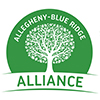This week’s flurry of Executive Memoranda and Orders signed by President Trump have included several actions with relevance to the proposed Atlantic Coast Pipeline and the Mountain Valley Pipeline. Here’s a rundown of some of the actions taken and links to them:
Provides for governors to request of the Chairman of the White House Council on Environmental Quality (CEQ) that a project in their state requiring federal agency approvals qualify as a “high priority” infrastructure project. If so designated, the CEQ Chairman would coordinate with relevant federal agencies to establish “expedited procedures and deadlines for completion of environmental reviews and approvals for such projects.” Pipelines are cited among the eligible infrastructure projects. A list of 50 priority infrastructure projects, compiled by the Trump transition team, was released this week. The Atlantic Coast Pipeline was listed as project #20, the only pipeline project included.
Invites TransCanada, the builder of the proposed oil pipeline, to resubmit its application to the Secretary of State, who in turn is directed to reach a permitting decision within 60 days. The final Environmental Impact Statement issued by the State Department in 2014 is to be considered satisfactory. The U.S. Corp of Engineers and U.S. Department of Interior are to expedite consideration of permits they are respectfully responsible for issuing. All of that notwithstanding, state approvals will still be required. While TransCanada says it will reapply, the Toronto Globe and Mail observed January 25 that “oil prices remain half what they were just three years ago, and Canadian oil-sands producers face increasing competition from U.S. shale firms for market share,” so market realities may be a factor as to whether the project is indeed revived.
This Presidential Memorandum directs the U.S. Corp of Engineers to “review and approve in an expedited manner, to the extent permitted by law and as warranted, and with such conditions as are necessary or appropriate, requests for approvals to construct and operate the DAPL” and to “consider, to the extent permitted by law and as warranted, whether to rescind or modify” previous actions taken by the Department of the Army in December and January that stopped the project. Lots of “ifs” and “buts, and legal challenges will most certainly occur whatever further decisions are made.
Requires the Secretary of Commerce within 180 days to “develop a plan under which all new pipelines, as well as retrofitted, repaired or expanded pipelines, inside the borders of the United States, including portions of pipelines, use materials and equipment produced in the United States, to the maximum extent possible and to the extent permitted by law.” Lots of questions, including: 1) Would pipelines that haven’t been approved be affected if they have already signed contracts with suppliers? 2) How would it affect the Keystone XL, to be built by across Canada as well as the U.S. by a Canadian-based company? 3) Is there enough domestic steel capacity to satisfy the requirement? Currently 1/3rd of all steel used in the U.S. is imported.

